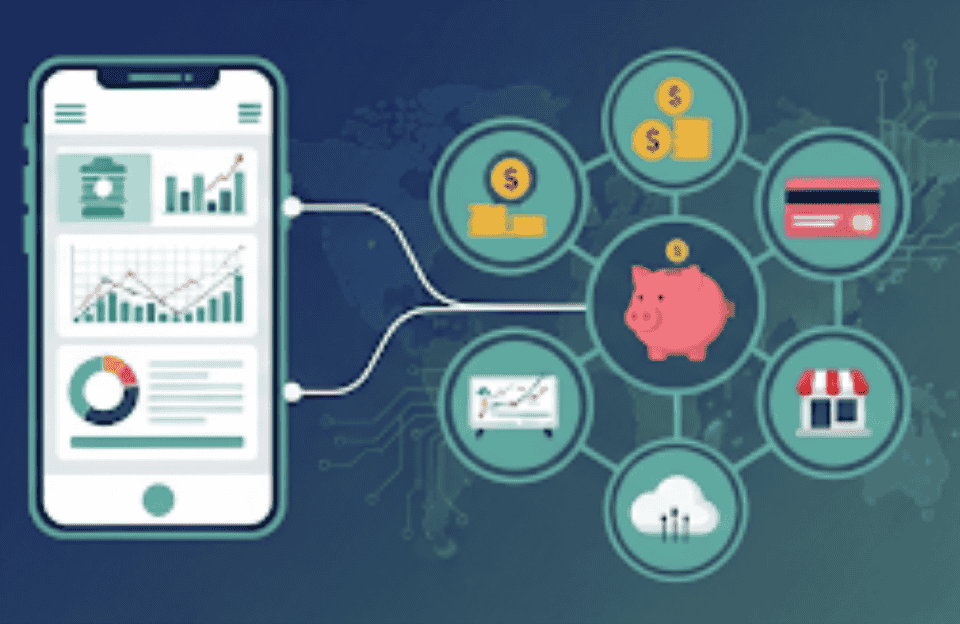If you’ve ever connected your bank account to an app like PayPal, Revolut, or a budgeting app, you’ve already seen open banking in action. But many people still ask, what is open banking and how does it work?
In this guide, we’ll break it down in simple words. You’ll learn what open banking is, see real examples, understand payments, and discover what an API does in this system.
Key Takeaways
- Open banking lets banks share data securely with apps, only with customer consent.
- It works through APIs, which act like safe digital bridges.
- Open banking payments allow direct transfers, faster than card payments.
- Examples include budgeting apps, payment services, investment tools, and credit scoring.
- Benefits include more control, cheaper payments, and better financial tools.
- Risks exist, but safe use depends on trusted apps and regulations.
What Is Open Banking?
Open banking is a way for banks to share customer financial data (securely) with third-party apps or services—only if the customer agrees. Instead of banks being the only place that holds your financial information, open banking lets apps and other platforms connect to your account safely to provide you better services.
Think of it like this: instead of carrying your money only in one wallet, you can connect that wallet to apps that help you budget, invest, or make payments.
In short: Open banking gives you more control over your financial data and makes banking more flexible.
What Is Open Banking and How Does It Work?
Now that you know the definition, let’s see how it works in practice.
Open banking runs on a technology called APIs (Application Programming Interfaces). These APIs act like digital “bridges” that allow secure communication between your bank and a third-party app.
Here’s a simple breakdown of the process:
- You give permission. You choose which apps can access your bank information.
- API connects systems. The API safely sends your financial data to the approved app.
- App provides service. The app uses your data to help you budget, send money, or make payments.
- You stay in control. You can revoke access at any time.
Example: Let’s say you connect your bank account to a budgeting app like Yolt or Mint. Once you allow access, the app reads your transactions (through the API) and shows you where you spend the most money.
What Is Open Banking Payments?
One of the biggest benefits of open banking is faster and cheaper payments. Instead of using a card network like Visa or Mastercard, open banking payments move money directly from your bank account to the seller’s account.
Why this matters:
- No middlemen → lower fees for businesses
- Real-time transfers → money moves instantly
- Safer → transactions use secure authentication (like fingerprint or face ID)
Example: When you buy something online and the website offers “Pay by Bank,” that’s an open banking payment. It takes money straight from your account, without needing your card details.
What Is API in Open Banking?
Since APIs are at the core of open banking, let’s dive a bit deeper.
API (Application Programming Interface): A set of rules that lets two systems talk to each other.
In open banking:
- Banks provide APIs to allow secure data sharing.
- Apps use these APIs to request account details or initiate payments.
- Customers stay protected because APIs don’t reveal login details—only the specific data you approve.
Think of an API like a waiter in a restaurant. You (the customer) give your order (permission), the waiter (API) takes it to the kitchen (bank), and then delivers your food (data or payment) to your table (app).
What Is Open Banking Examples?
To make this clearer, here are real-life examples of open banking in action:
- Budgeting apps – Apps like Mint, Yolt, and Emma connect to your bank accounts and show your spending habits.
- Payment services – Platforms like Klarna or Trustly use open banking payments for direct transfers.
- Investment tools – Apps like Robinhood or Moneybox can connect with your account to round up spare change into investments.
- Credit scoring – Companies use open banking data to create fairer credit scores based on your real spending, not just debt.
| Example Use | How It Works | Benefit |
| Budgeting App | Connects to your account and tracks spending | Helps manage money |
| Payment App | Direct bank-to-bank transfer | Faster, cheaper payments |
| Investment App | Rounds up purchases into savings | Encourages investing |
| Credit Service | Uses transaction data | Fairer credit scoring |
Open Banking in Action: 2024–2025 Stats
Let’s add some real numbers to make this supply crystal clear how fast open banking is growing—in the UK, globally, and now the USA too:
USA Highlights
- In the USA, nearly 52% of adults now use at least one open banking–enabled service. CoinLaw
- An estimated 100 million U.S. consumers have authorized third-party access to their financial data. mastercardservices.com
- Around 76 million consumers use the FDX (Financial Data Exchange) API for data sharing. Aeropay
- On the market side: the U.S. open banking market generated US $7.14 billion in 2024, with projections to grow to US $30.93 billion by 2030, corresponding to a strong 27.9% CAGR. Grand View Research
UK Highlights
- As of March 2025, roughly 13.3 million users (individuals + small businesses) actively use open banking—a 40% increase from a year earlier.
- About 18–20% of people with online bank accounts are open banking users.
- In that month alone, 31 million open banking payments occurred—making up nearly 7.9% of all Faster Payments.
Global Trends
- Globally, the open banking user base surpassed 470 million in 2025 and is expected to reach 600 million by 2027. CoinLaw
- The global open banking market was valued at US $30.9 billion in 2024, projected to climb to US $38.9 billion in 2025, with a hefty 24.8% CAGR. IMARC Group
- Open banking API calls are expected to increase 427% by 2029 (from 2025 levels), reaching a total of 722 billion calls. Juniper Research
What These Numbers Tell Us
These figures show open banking is not just “the future”—it’s already real and increasingly being embraced across multiple markets:
- In the UK, usage has soared—reaching millions and reaching deeper into everyday bank users.
- In the USA, adoption is strong and fast-moving, even before full-scale regulation, driven by consumer demand and market-led efforts.
- Globally, the market scale, API traffic, and user base are all skyrocketing—underlining a clear and accelerating trend.
Benefits of Open Banking
Open banking is built around one big idea: giving customers more power over their own money and data. Instead of banks keeping everything locked away, open banking lets you decide how and where your information is used. This shift is creating real benefits for everyday people and businesses.
More control
With open banking, you stay in charge. You decide which apps or services can access your financial data and for what purpose. If you change your mind, you can revoke access at any time. This flexibility means you don’t have to feel trapped by one bank’s tools—you can choose the services that work best for you.
Better services
Because multiple apps and fintechs can connect to your account, they’re all competing to offer smarter, more helpful tools. That competition leads to innovation. For example, budgeting apps can give you better insights into spending, while investment tools can help you grow savings automatically.
Cheaper payments
Open banking payments cut out the middlemen like card networks. Money moves directly from your account to the business, often instantly. For companies, this lowers transaction fees. For customers, it can mean faster checkouts and, over time, better prices.
Improved budgeting
Many people struggle to keep track of where their money goes. Open banking makes it easier by giving apps real-time access to your transactions. That means you can see patterns, track bills, and even set alerts before you overspend.
Fairer credit
Traditional credit scores often rely heavily on debt history, which doesn’t tell the full story. With open banking, lenders can look at your actual income and spending habits. This creates fairer access to credit for people who might otherwise be overlooked.
In short, open banking isn’t just about technology—it’s about making finance more open, fair, and useful for everyone.
Risks of Open Banking
Open banking creates opportunities, but it also carries some risks that users need to be aware of.
1. Data Security
APIs are designed to be safe, but if you grant access to unregulated or untrustworthy apps, your sensitive data could be exposed.
2. Scams and Fraud
Fake apps or phishing attempts may trick users into approving access. Staying alert is key to avoiding fraud.
3. Limited Coverage
Not all banks or apps are fully connected yet, which can limit your options.
Tip: Always use apps approved by official financial regulators.
FAQs
1. Is open banking safe?
Yes, when used with regulated apps and banks. APIs are designed to share data securely without giving away login details.
2. What is API in open banking?
An API is a digital connector that allows banks and apps to exchange data safely. It ensures only the information you approve gets shared.
3. What are examples of open banking?
Budgeting apps like Mint, payment services like Trustly, and investment tools like Moneybox all use open banking.
4. How does open banking affect payments?
It allows direct bank-to-bank transfers, which are faster and often cheaper than card payments.
5. Can I turn off open banking once I start?
Yes. You can revoke access anytime from your banking app or the third-party service you connected.
Conclusion
So, what is open banking and how does it work? It’s a way to make your financial life easier, more flexible, and more transparent. By giving you control over your data and enabling new services, open banking is reshaping how we think about money.
If used wisely with trusted apps, open banking can help you budget better, pay faster, and even build fairer credit. The future of banking is open—and it’s already here.
Sources
- European Banking Authority (2023). Open Banking and APIs. Available at: https://www.eba.europa.eu
- UK Open Banking (2023). Open Banking Explained. Available at: https://www.openbanking.org.uk
- Financial Conduct Authority (2023). What is Open Banking? Available at: https://www.fca.org.uk
Mariam holds an MS in Sociology and brings a sharp, people-centered perspective to her writing. She contributes to multiple websites, covering business, current news, and trending topics with insight and creativity that connects with readers.


